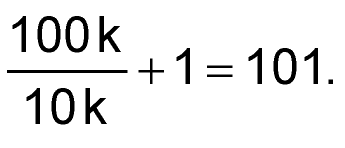Differential temperature measurement is a handy way to quantify the performance of heatsinks, thermoelectric coolers (TECs), and thermal control in electronic assemblies. Figure 1 illustrates an inexpensive design for a high-resolution differential thermometer utilizing the ∆VBE effect to make accurate measurements with ordinary uncalibrated transistors as precision temperature sensors.
 |
|
| Figure 1. | Transistors Q1 and Q2 perform self-calibrated high resolution differential temperature measurements. |
Here’s how it works.
Diode connected transistors Q1 and Q2 do duty as precision temperature sensors driven by switches U1a and U1c and respective resistors R2, R3, R13, and R14. The excitation employed comprises alternating-amplitude current-mode signals in the ratio of (almost exactly):
10:1 = (100 µA via R3 and R13):(10 µA via R2 and R14).
With this specific 10:1 excitation, most every friendly small-signal transistor will produce an AC voltage signal accurately proportional to absolute temperature, TA, with peak-to-peak amplitude given by:

The temperature-difference-proportional signals from Q1 and Q2 are boosted by ~100:1 gain differential amplifier A1a and A1d, synchronously demodulated by U1b, then filtered by R11, C2, and C3 to produce a DC signal = 20 mV/°C. This is then scaled by a factor of 2.5 by A1c to produce the final Q1–Q2 differential temperature signal output of 50 mV/°C, positive for Q1 warmer than Q2, negative for Q2 warmer than Q1.
Some gritty design minutiae are:
- Although the modulation-current setting resistors are in an exact 10:1 current ratio, the resulting modulation current ratio isn’t quite… The ∆VBE signal itself subtracts slightly from the 100 µA half-cycle, which reduces the actual current ratio from exactly 10:1 to 9.9:1. This cuts the ∆VBE temperature signal by approximately –1%.
- Luckily, the gain of the A1a/d amplifier isn’t exactly the advertised 100 either but is actually

This +1% “error” neatly cancels the ∆VBE signal’s –1% “error” to result in a final, acceptably accurate 20 mV/°C demodulator output.
- The modulating/demodulating frequency FC generated by the A1b oscillator is deliberately set by the R4C1 time constant to be half the power mains frequency (30 Hz for 60 Hz power and 25 Hz for 50 Hz) via the choice of R4 (160 kΩ for 60 Hz and 200 kΩ for 50 Hz). This averages a couple mains-frequency cycles into each temperature measurement and thus improves immunity to stray pickup of power-line coupled noise. It’s a useful trick because some differential-thermometry applications may involve noise-radiating, mains-frequency-powered heaters. For convenience, the R5/R6 ratio was chosen so that

- Resistor values adorned with an asterisk in the schematic denote precision metal-film types. Current-ratio-setting R2, R3, R13, and R14 are particularly critical to minimizing zero error and would benefit from being 0.1% types. The others are less so and 1% tolerance is adequate. No asterisk means 5% is good enough.